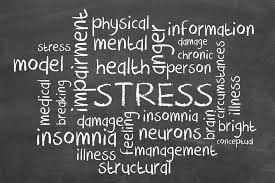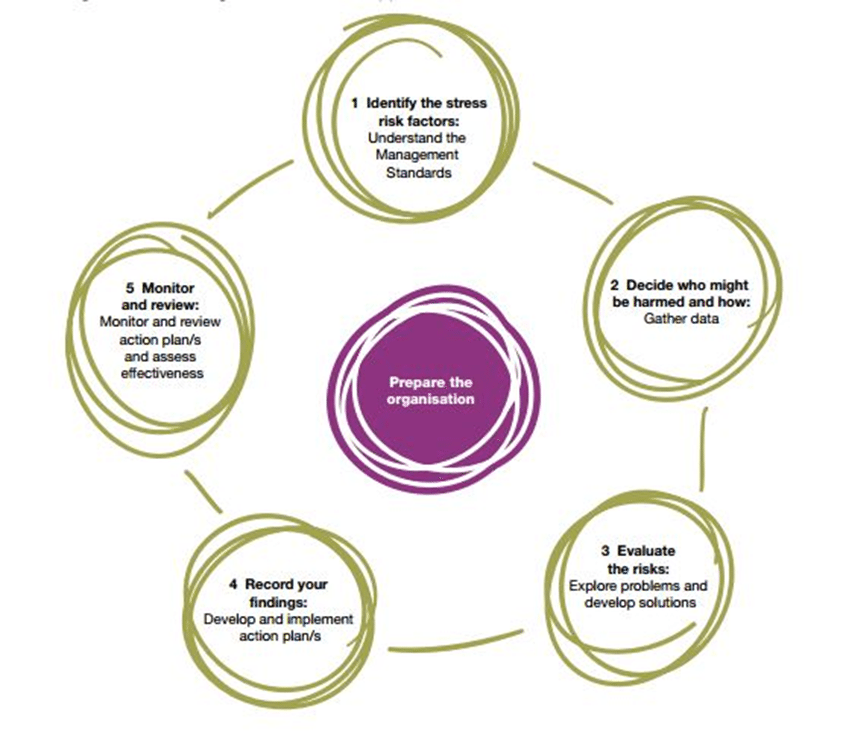Stress now top health and safety concern at work
A survey to coincide with World Mental Health Day suggests that 70% of workplaces now have a problem with stress.
Stress is now the main concern for health and safety officials in UK workplaces, according to a study by the TUC.
So this week I thought that I should look at what you, as an employer could be doing to tackle work-related stress
This week’s 2 recent HSE cases also look at accidents that could and should have been avoided.
- Mark Evans has been prosecuted after he installed a gas boiler and left it in a potentially dangerous state because he did not commission it.
- Mr Simpson’s right leg was broken and his right foot was badly crushed. Despite a number of operations to save his foot, most of it was amputated and he now has a prosthetic foot.
We hope you learn from the mistakes of others that are highlighted in our weekly newsletters and, as a result, do not have similar accidents at your workplace.
As ever, if you have a subject that you would like us to cover one week, please contact us by phone 01458 253682, email or via our Facebook page or by Twitter.
How to tackle work-related stress
Going to work is generally good for us, but only if our health, safety and welfare are protected. Preventing ill health because of work-related stress is part of creating a good working environment for your employees.
What is stress and why do we need to tackle it?
People get confused about the difference between pressure and stress. We all experience pressure regularly – it can motivate us to perform at our best. It is when we experience too much pressure and feel unable to cope that stress can result.
The Health and Safety Executive (HSE) estimates the costs to society of work-related stress to be around £4 billion each year, while 13.5 million working days were lost to stress in 2007/08. By taking action to reduce the problem, you can help create a more productive, healthy workforce and save money. Many organisations have reported improvements in productivity, retention of staff and a reduction in sickness absence after tackling work-related stress.
As an employer, you are also required by law to assess the risk of stress-related ill health arising from work activities and take action to control that risk.
Try using the HSE’s Management Standards approach
The Management Standards approach requires managers, employees and their representatives to work together to improve certain areas of work, described in the Standards, which will have a positive effect on employee well-being.
Under each area there are ‘states to be achieved’, which organisations should work towards.
The approach is aimed at the organisation rather than individuals, so that a larger number of employees can benefit from any actions taken.
Before you start: Prepare the organisation
Before you introduce the Management Standards approach, remember to plan ahead and prepare the organisation.
Start by thinking about securing the commitment of senior managers, line managers and employees. It is also good practice to set up a project or steering group to oversee the work.
This group will typically include senior and line managers; health and safety managers; trade union health and safety representatives or employee representatives; human resources and occupational health representatives.
Step 1 Identify the risks
Understand the Management Standards
There are six areas of work that can have a negative impact on employee health if not properly managed. These are outlined in the Management Standards, along with descriptions of good practice.
The Management Standards approach and how it applies in your workplace should be explained so that everyone understands it. Some organisations have incorporated or made reference to the Standards in their stress policy documents. This can help explain the reasons for using the approach and can define the roles and responsibilities of those involved in making the policy work.
The six Management Standards cover:
Step 2 Decide who might be harmed and how
Gather data
You probably already have a lot of data that can be used to identify areas of good and poor practice. Try not to rely on one set of data as this might not provide an accurate picture of your organisation. It is better to use a number of sources and look for relationships within the data to get a more accurate view of the current state of your organisation.
Annual staff surveys can be used to gather the views of employees. These can be used as a source of data, but should not be the only data used to assess those at risk.
The analysis of your data helps you to understand your organisation’s current situation. This can be used as a starting point, working with employees to improve health, well-being and performance.
Typical data available includes:
Communication is crucial. If staff do not understand why a survey is being done or are sceptical about its motives, they may not return questionnaires. A good return is essential to get a representative sample of the organisation. Initial communication is very important. Where there are trade union and employee representatives, they can help communicate with staff. Ways of improving response rates include delivering questionnaires with pay slips to ensure all staff get a copy and setting time aside for completion of surveys
Step 3 Evaluate the risks
Explore problems and develop solutions
Use the results from Step 2, along with the Management Standards, to help you decide what to do in this step. Identify hot spots and priority areas. Check the results of the analysis with your employees. Then work with them to determine how to address the gap between current performance and the ‘states to be achieved’ within the Management Standards.
Make sure you involve employees and their representatives in discussions as they are often the ones closest to the issues and best placed to suggest improvements. A good way to consult is through focus groups – the number of groups will depend on things like the size and structure of the organisation, available resources and, most importantly, the results of your data analysis from Step 2.
The outcomes of the focus group discussions should be a set of suggested actions aimed at addressing specific issues. If you have used multiple focus groups then it is normally the role of the project team or steering group to collect and prioritise the suggested actions.
Example Standard: Demands
Demands covers issues like workload, work patterns and the work environment.
The Standard here is that employees indicate that they are able to cope with the demands of their jobs, and systems are in place locally to respond to any individual concerns.
To reach this Standard, each risk area includes several points under ‘What should be happening/states to be achieved’ For DEMANDS these are:
Step 4 Record your findings
Develop and implement action plans
It is often the case that the actions from Step 3 are aimed at different levels of the organisation such as team, department, or division and will deliver in different timescales (short, medium or long). So, when compiling your action plan, consider how you intend to evaluate each action and how you will know whether it has been successful. Ask yourself: How will we know if this is working and what measures can we use?
When complete the action plan should be communicated to employees. Some examples of popular actions are:
Step 5 Monitor and review
Monitor the actions in your plan to ensure they are having the desired effect in the appropriate timescale.
At this stage reflect on what you have found out. In particular, consider what the types of activities you have put in your action plan can tell you about the underlying issues in your organisation.
Think about what you can do in the future to prevent the problems identified happening again so you are able to deal with them in a proactive rather than reactive way. Explain to managers that good stress management is not about a survey, but is an ongoing process of continuous improvement.
Remember, as with all risk assessments, record what you have done. As part of your monitoring process, you may be required to repeat the Management Standards approach again.
The essential role of the line manager
Line managers play a vital role in identifying and managing stress within the organisation. They are likely to see the problems which cause stress first hand and will often be the first point of contact when an individual is feeling stressed. It is essential that they have the skills and behaviours to be able to manage these situations.
Definition of stress
HSE’s formal definition of work related stress is:
“The adverse reaction people have to excessive pressures or other types of demand placed on them at work.”
Stress is not an illness – it is a state. However, if stress becomes too excessive and prolonged, mental and physical illness may develop.
There is a difference between pressure and stress. Pressure can be positive and a motivating factor, and is often essential in a job. It can help us achieve our goals and perform better. Stress occurs when this pressure becomes excessive. Stress is a natural reaction to too much pressure.
If you need further information please call us on 01458 253682 or send us an email.
